Estas señales probablemente son creadas por radioaficionados
Click Haz "click" en el nombre de modo para ver información más detallada, posible manera de decodificarlo y muestras de audio del mismo.
| Inactive (No longer in use) |
Active (Currently in active use) |
Status Unknown or Intermittent |
| Signal Name | Description | Frequency | Mode | Modulation | Bandwidth | Location | Sample Audio | Waterfall image |
|---|---|---|---|---|---|---|---|---|
| ALE-400 | ALE-400 es una versión de radioaficionado del estándar 2G ALE. Es una adaptación para radioafición y redes de comunicaciones para EMERGENCIA. | 1.806 MHz — 144.163 MHz | USB | MFSK | 400 Hz | Worldwide | 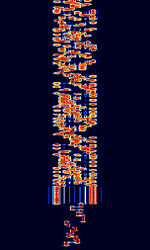 |
|
| AMSAT-P3D | AMSAT-P3D (conocido como Phase 3D, OSCAR-40, y AO-40) es un satélite para uso radioaficionados construido por AMSAT en 2004, algunos sistemas del satélite fallaron. | 145.805 MHz — 24,048.285 MHz | USB | PSK | 1.6 kHz | Worldwide | 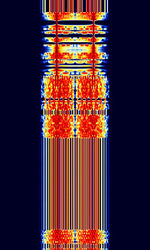 |
|
| ASCII | ASCII (también conocido como ITA5 o IRA) is an amateur radio telegraphy signal using the ITA-5 alphabet. | 3 MHz — 450 MHz | NFM, USB | FSK | 300 Hz | Worldwide | 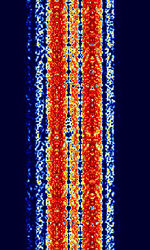 |
|
| Automatic Link Establishment (2G ALE) | Automatic Link Establishment, 2G ALE (Official designation MIL-STD-188-141A and/or MIL-STD-188-141B (Appendix A)) is the current standardized method of establishing connections between radio operators. Also known as FED-STD 1045, FED-STD 1049, and STANAG 5066. | 3.068 MHz — 28.313 MHz | USB | MFSK | 2 kHz | Worldwide | 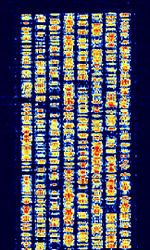 |
|
| Automatic Packet Reporting System (APRS) | Packet system for real time data communications. Used by hams for location reporting, weather stations etc. | 144.39 MHz — 145.57 MHz | NFM | AFSK | 10 kHz | Worldwide | 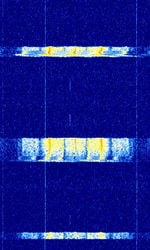 |
|
| CCIR 493-4 Selcall | CCIR 493-4 Selcall, also known as HFSelcall, Australian Selcall, and Codan 8580 Selcall, is a Selcall standard developed in Australia for the HF band. Used by Amateur radio and Codan Modems. | 3 MHz — 30 MHz | USB | FSK | 300 Hz | Worldwide | 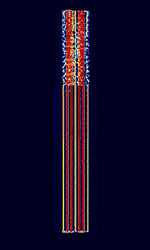 |
|
| CHIP | CHIP, or CHIP64, is a spread-spectrum PSKmode developed by Antonino Porcino IZ8BLY. | 7.09 MHz — 14.11 MHz | USB | PSK | 580 Hz | Worldwide | 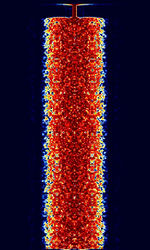 |
|
| CLOVER 2000 | CLOVER 2000 is an upgrade to CLOVER-II, a digital data protocol developed by Ray Petit and HAL Communications. Sometimes referred to as XCLOVER or 8 Tone CLOVER. | 3 MHz — 30 MHz | USB | PSK, QAM | 2 kHz | Worldwide | 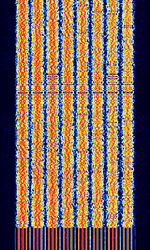 |
|
| CLOVER 2500 | CLOVER 2500 is a new upgrade to CLOVER-2000, adding 25% more speed to the CLOVER system. | 3 MHz — 30 MHz | USB | PSK, QAM | 2.5 kHz | Worldwide | 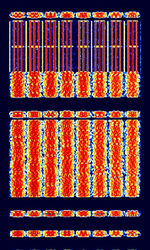 |
|
| CLOVER-I | CLOVER-I was the first iteration of the Clover series of digital modes. Was never released for commercial use, replaced by CLOVER-II. Also known as Cloverleaf. | 3 MHz — 30 MHz | USB | PSK, QAM | 100 Hz | Worldwide | 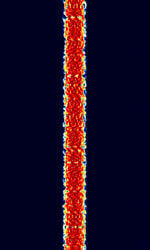 |
|
| CLOVER-II | CLOVER-II is the advancement of CLOVER-I, with 4 tone pulses and a max data rate of 750 bps. Also known as Q-CLOVER and QUAD-CLOVER. | 3 MHz — 30 MHz | USB | PSK, QAM | 500 Hz | Worldwide | 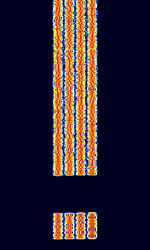 |
|
| Coherent BPSK | Coherent BPSK, also known as C-BPSK, was an experimental amateur mode developed by Bill DeCarle VE2IQ. | 138 kHz — 18.081 MHz | USB | PSK | 200 Hz | Worldwide | 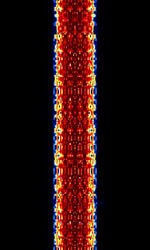 |
|
| Coherent CW | Coherent CW(also known as CCW) was a strictly timed morse code mode designed by Ray Petit W7GHM (The same inventor of CLOVER). CCW depended on accurate timing from both receiver and transmitter. | 3 MHz — 30 MHz | USB | OOK | 1 Hz | Worldwide | 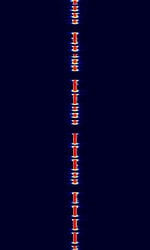 |
|
| Contestia | Contestia, developed by Nick Fedoseev (UT2UZ) in 2005, is a digital mode derived from Olivia. It aims to deliver a compromise of speed and performance. | 3 MHz — 30 MHz | USB | MFSK | 150 Hz — 2 kHz | Worldwide | 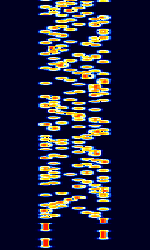 |
|
| D-STAR | D-STAR is a digital voice protocol used by ham radio. Is sometimes routed over the internet for international communications. | 145.67 MHz | NFM | PSK, GMSK, 4FSK | 6.25 kHz | Worldwide | 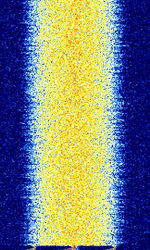 |
|
| DominoEX | DominoEX, also known as just Domino, is an IFK (Incremental Frequency Keying) mode developed by Murray Greenman ZL1BPU and Con Wassilieff ZL2AFP in 2004 that was the first fully developed iteration of the Domino IFKfamily modes. Used to send text over RF. | 5.332 MHz — 28.117 MHz | USB | IFK | 173 Hz — 524 Hz | Worldwide | 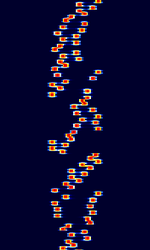 |
|
| DominoF | DominoF was the first experimental implementation of the Domino family of IFKmodes, developed by Con ZL2AFP. DominoF used dual interleaved tone sets. Superseded by DominoEX. | 1.838 MHz — 28.08 MHz | USB | IFK | 220 Hz | Worldwide | 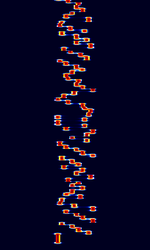 |
|
| FSK441 | FSK441 is a high speed meteor scatter communication mode. FSK441 uses a baud rate of 441 Bd. | 144 MHz — 444 MHz | USB | FSK | 1.75 kHz | Worldwide | 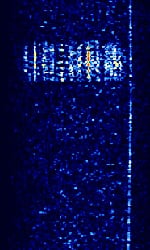 |
|
| FSQ | Fast Simple QSO (FSQ) is an amateur radio digital modulation mode developed by Con Wassilieff ZL2AFP with Murray Greenman ZL1BPU in 2015. | 3.58 MHz — 10.149 MHz | USB | IFK+ | 300 Hz | Worldwide | 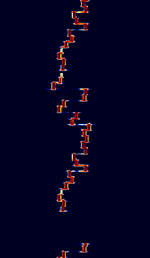 |
|
| FT8 | FT8 is an amateur radio QSO communication protocol | USB | MFSK | 50 Hz | Worldwide | 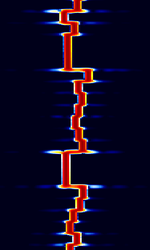 |
||
| FUNcube-1 Telemetry | FUNcube-1 Telemetry is a telemetry signal sent from the Funcube-1 Cubesat amateur radio satellite. | 145.935 MHz | USB | PSK | 2 kHz | Worldwide | 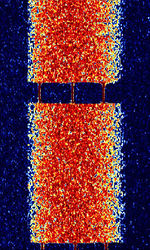 |
|
| FreeDV COHPSK | FreeDV Coherent PSK(Also known as FreeDV 700) is a robust Digital Voice mode developed by David Rowe for his FreeDV Digital Voice Software. | 3 MHz — 30 MHz | USB | PSK | 1.5 kHz | Worldwide | 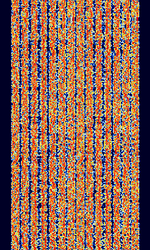 |
|
| Frequency Division Multiplex Digital Voice (FDMDV) | Frequency Division Multiplex Digital Voice (FDMDV), also known as FDMDV 14+1-tone, is a digital voice mode originally developed by Peter Martinez G3PLX and Francesca Lanza HB9TLK. It has since been improved upon by David Rowe. | 3 MHz — 30 MHz | USB | PSK | 1.125 kHz— 1.3 kHz | Worldwide | 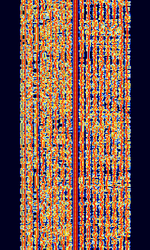 |
|
| G-TOR | Golay-Teleprinting Over Radio (G-TOR) is an FSKproprietary standard developed by Kantronics Inc. and is used by radio amateurs, military (Irish Air Corps/Navy, Mexican army) and governmental agencies (ICRC). | 3 MHz — 30 MHz | USB | FSK | 350 Hz | Worldwide | 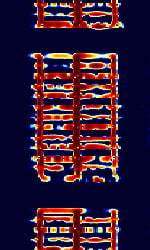 |
|
| Hellschreiber | Hellschreiber (Also known as Feld Hell or just Hell) is a teleprinter system developed in the late 1920's by Rudolf Hell, a German inventor. | 3 MHz — 30 MHz | USB | OOK, FSK, MSK | 350 Hz — 800 Hz | Worldwide | 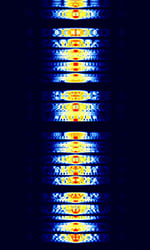 |
|
| ISCAT | Ionospheric Scattering (ISCAT) mode used for weak signal long distance radio contact by meteor and Ionosphere scattering. | 50 MHz — 148 MHz | USB | MFSK | 904 Hz — 1.809 kHz | Worldwide | 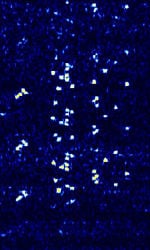 |
|
| JT65 | JT65 is an amateur radio QSO communication protocol developed by Joe Taylor, K1JT. JT65 has 3 submodes: JT65A, JT65B, and JT65C. The most popular submode of JT65 is JT65A. JT65 gets '65' from the 65 tones it uses. | 1.838 MHz — 50.276 MHz | USB | MFSK | 180 Hz — 710 Hz | Worldwide | 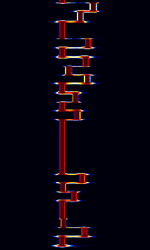 |
|
| JT6M | JT6M is part of the WSJT suite of digital weak signal software applications developed by Joe Taylor, K1JT | 50.215 MHz — 50.25 MHz | USB | MFSK | 1 kHz | Worldwide | 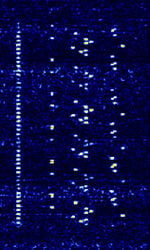 |
|
| JT9 | JT9 is a very narrow 9-FSKmode for making contact (QSO's) under extreme weak-signal conditions. | 3.578 MHz — 28.079 MHz | USB | MFSK | 20 Hz | Worldwide | 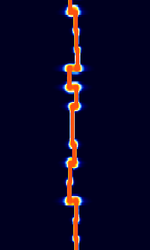 |
|
| JTMS | JTMS is a meteor scatter mode that uses MSK. JTMS behaves similarily to FSK441. | 3 MHz — 30 MHz | USB | MSK | 1.7 kHz | Worldwide | 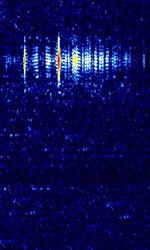 |
|
| KG-STV | KG-STV is an image transmission mode developed by JJ0OBZ in Japan. | 3.733 MHz — 14.233 MHz | USB | FSK | 500 Hz — 2.5 kHz | Worldwide | 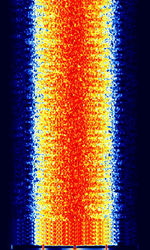 |
|
| Kiwi | Kiwi is a telemetry mode developed by CNES used on amateur rockets and radio balloons in France. | 137.95 MHz — 138.5 MHz | NFM | FSK | 12.5 kHz | France | 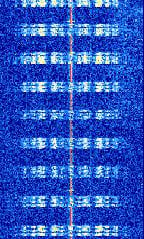 |
|
| Lentus | Lentus is an extremely slow QRP mode developed by Patrick Lindecker F6CTE used to transmit QRP's at very low power. Each 43-character (75 bit) transmission takes roughly 5 minutes to transmit across 32 possible tones in a tight 25 Hzbandwidth. | 136.3 kHz — 14.096 MHz | USB | MFSK | 25 Hz | Worldwide | 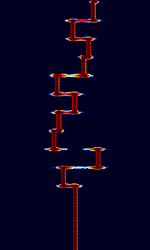 |
|
| MT63 | MT63 is a Orthogonal Frequency Division Multiplexed (OFDM) digital data mode aimed for use in high noise environments. | 3 MHz — 30 MHz | USB | OFDM, PSK | 500 Hz — 2 kHz | Worldwide | 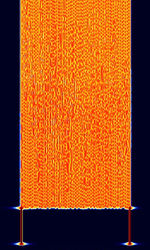 |
|
| Morse Code (CW) | CW Morse Code is the simplest form of transmission found virtually all over the RFbands for a variety of uses. The most common use of this is for Call-sign Beacons by both Amateur and Military operators. | 1 MHz — 930 MHz | CW | OOK | 1 Hz | Worldwide | 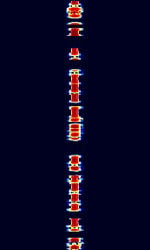 |
|
| Multi Frequency Shift Keying (MFSK) | MFSK is a family of multi-frequency shift keying digital transmission modes. MFSK-8 and MFSK-16 are two well-known amateur radio modes. | 3 MHz — 30 MHz | USB | MFSK | 154 Hz — 630 Hz | Worldwide | 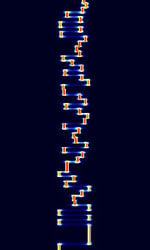 |
|
| OPERA Beacon / Data | OPERA Ad-Hoc Data/Beacon | 136 kHz — 10,000 MHz | USB | ASK | 1 Hz | World Wide | 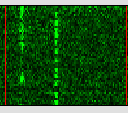 |
|
| Olivia | OLIVIA is an amateur digital teletype mode designed by Pawel Jalocha SP9VRC in 2005. It's goal was to be effective even in poor propagation conditions. | 3 MHz — 30 MHz | USB | MFSK | 125 Hz — 2 kHz | Worldwide | 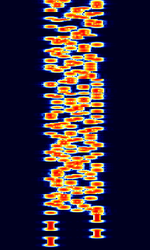 |
|
| PACKET | PACKET, also known as FSK300, AX25, and X25, is a packet based protocol derived from AX.25 and HDLC computer network protocols. Packet radio is a synchronous system in which data is transmitted in ASCII character packets. | 3 MHz — 800 MHz | USB | FSK | 730 Hz | Worldwide | 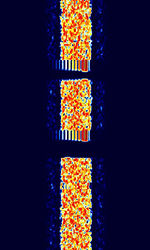 |
|
| PAX | PAX and PAX2 are developed by Patrick Lindecker F6CTE in 2005, and was derived from Olivia. It utilizes the AX.25 protocol that PACKET uses, and had a minimum SNR of -10dB. Can transmit APRSframes. | 3.59 MHz — 144.62 MHz | USB | MFSK | 500 Hz | Worldwide | 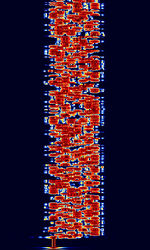 |
|
| PSK-AM | PSK-AM is an amateur digital mode developed by Patrick Lindecker F6CTE in 2002/2003, and incorporates FEC interleaving. PSK-AM uses the modulation of PSK10/31 with the FEC of SITOR-B. | 10.148 MHz — 144.62 MHz | USB | PSK | 40 Hz — 180 Hz | Worldwide | 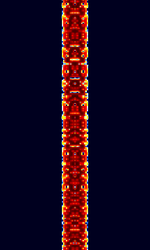 |
|
| PSK2K | PSK2K is a meteor scatter type of mode written by DJ5HG Using a modulation scheme of BPSKat 2000 Bd. | 50.36 MHz — 144.36 MHz | USB | PSK | 2 kHz | Worldwide | 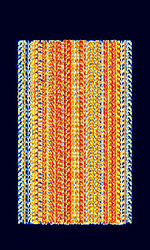 |
|
| Phase Shift Keying (PSK) | PSK is a digital teletype mode based on Phase-Shift Keying (PSK) modulation. The most popular amateur radio PSK mode is PSK 31. | 1.838 MHz — 909 MHz | USB | PSK | 10 Hz — 1 kHz | Worldwide | 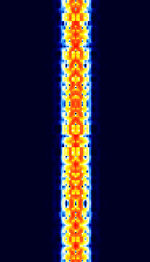 |
|
| Q15X25 | Q15X25, also known as NEWQPSK, is an experimental amateur radio packet modem developed by Pawel Jalocha SP9VRC. Q15X25 is a OFDM QPSKimplementation of the AX.25 Packet protocol used in PACKET. | 3.585 MHz — 14.109 MHz | USB | PSK, OFDM | 1.95 kHz— 2.35 kHz | Worldwide | 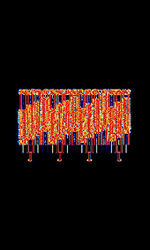 |
|
| Quadcopter Telemetry Signal | This signal originates from the Silicon Instruments Si1000 Software Defined Radio (SDR) that is a component of the 3DR Telemetry Radio, sold for use as a data link between a computer ground station and a UAV "a drone". | 414 MHz — 935 MHz | FHSS-TDM | BPSK, QAM, 8PSK | Worldwide | No Audio File | 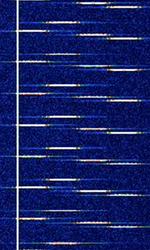 |
|
| ROS | ROS is an amateur radio teletype free running QSO mode designed for low signal/high noise conditions. | 1.8 MHz — 30 MHz | USB | CDMA, Phase Continious MFSK | 2 kHz | Worldwide | 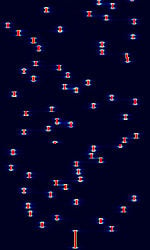 |
|
| RTTYM | RTTYM, developed by Nick Fedoseev (UT2UZ) in 2005, is a digital mode derived from Olivia. It aims to deliver a compromise of speed and performance. RTTYM is about 4x faster than Olivia, but trades the speed for reduced robustness and sensitivity. | 3 MHz — 30 MHz | USB | MFSK | 150 Hz — 2 kHz | Worldwide | 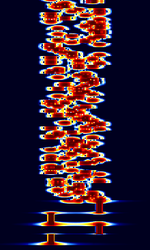 |
|
| Radio Teletype (RTTY) | RTTY (Also known as Baudot or ITA2) uses the Baudot 5-bit alphabet with FSK to send text messages over the shortwave. This mode is gradually dying out in favor of more robust modes like PSK31 in the amateur service. | 147.3 kHz — 28.15 MHz | USB | FSK | 85 Hz — 850 Hz | Worldwide | 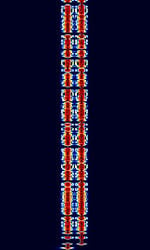 |
|
| Redundant Digital File Transfer (RDFT) | RDFT is an amateur radio digital mode used to transmit files. | 9.065 MHz — 9.24 MHz | USB | PSK | 1.8 kHz | Worldwide | 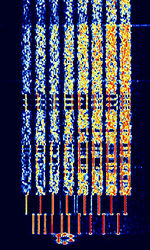 |
|
| Robust PACKET | Robust PACKET, also known as HF-APRS, RPR, Winlink RMS, and APRSlink, is an OFDMversion of the amateur mode PACKET which is optimized for shortwave use. This mode was developed by Spezielle Communications Systeme GmbH & Co. KG (SCS). | 3.61 MHz — 14.103 MHz | USB | PSK, OFDM | 500 Hz | Worldwide | 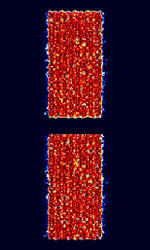 |
|
| Single Sideband Voice | Single side band, either lower side band or upper side band, is an AM modulated voice channel with one sideband suppressed. Used in the HFband by amateur radio hams and aircraft weather reports. | 3 MHz — 30 MHz | SSB | AM | 1.9 kHz | Worldwide | 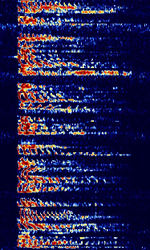 |
|
| Slow-Scan Television (SSTV) | Slow-scan television (SSTV) is a method for picture transmission used by amateur radio operators to transmit and receive images. | 3 MHz — 300 MHz | USB | FM | 2.5 kHz | Worldwide | 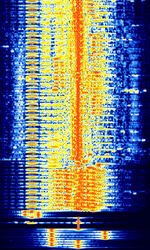 |
|
| THOR | THOR is an adaptation of DominoEX with MFSK16 binary varicode and FEC. | 3 MHz — 30 MHz | USB | IFK | 173 Hz — 524 Hz | Worldwide | 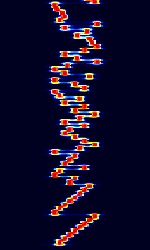 |
|
| THROB | THROB is a unique data mode that relies heavily on DSP techniques, using MFSK and AMmodulation techniques together. | 3 MHz — 30 MHz | USB | MFSK | 72 Hz — 188 Hz | Worldwide | 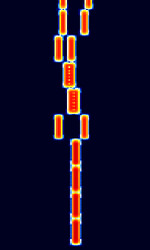 |
|
| VOICE | VOICE is a MFSK mode developed by Patrick Lindecker F6CTE in 2006, and was derived from Olivia. It was designed for blind or partially sighted amateur radio operators. | 3 MHz — 30 MHz | USB | MFSK | 200 Hz | Worldwide | 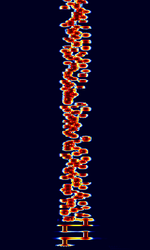 |
|
| WSPR | Weak Signal Propagation Reporter. | 0 Hz | USB | MFSK | 6 Hz | Worldwide | 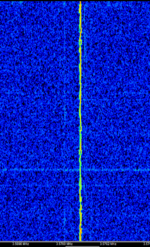 |
|
| WinDRM | WinDRM is an amateur radio derivation of the Digital Radio Mondiale (DRM) digital voice and data transmission protocol. Also known as HamDRM, and Digital SSTV. | 14.236 MHz | USB | QAM, OFDM | 2.2 kHz — 2.4 kHz | Worldwide | 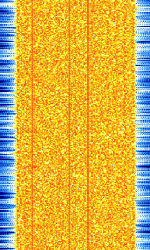 |
|
| Yaesu System Fusion | System Fusion is Yaesu's digital voice/data protocol for amateur radio, using the AMBE+2 vocoder on a C4FM signal. | 144 MHz — 450 MHz | FM | 4FSK | 16 kHz | Worldwide |  |
Pages in category "Amateur Radio"
The following 59 pages are in this category, out of 59 total.
A
C
DF |
F cont.GHIJKLMOP |
P cont.QRSTVWY |